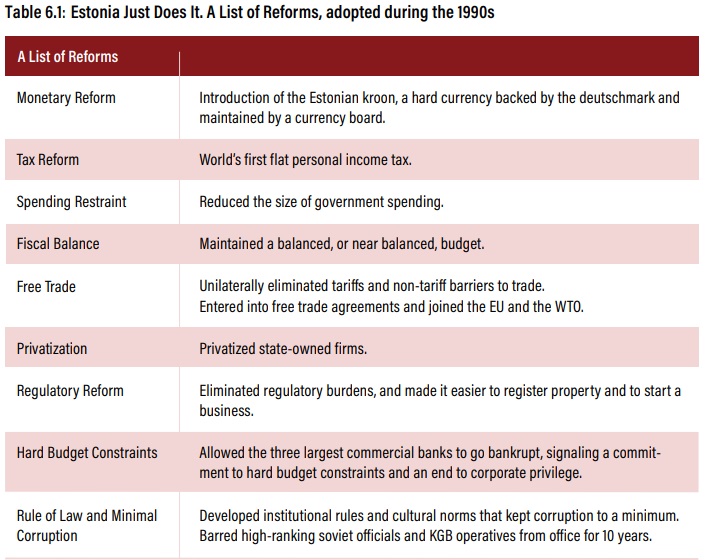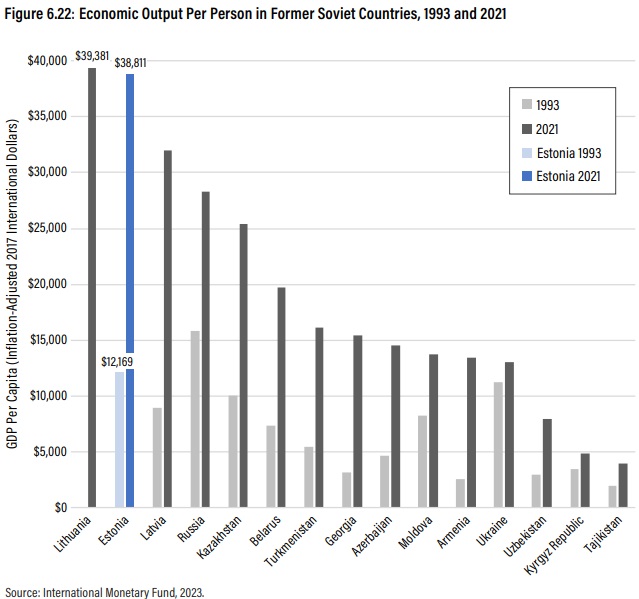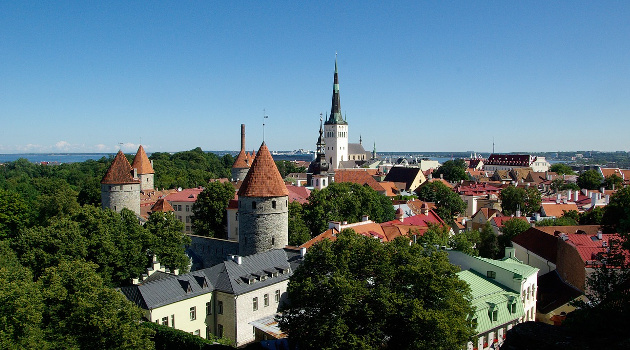I shared a 44-minute video on the “improbable success” of Estonia back in 2016. For those with time constraints, here’s a new video on the same topic that’s only 56 seconds.
The video is part of a project on the Realities of Socialism, which includes a book on Estonia’s tragic impoverishment under Soviet oppression and then subsequent enrichment after getting independence.
Written by Matthew Mitchell, Peter Boettke, and Konstantin Zhukov, the book lists the main economic reforms enacted after escaping communism.

All together, these reforms changes helped make Estonia one of the world’s most market-oriented nations. It has the world’s 12th-freest economy according to Economic Freedom of the World and the 6th-freest economy according to the Index of Economic Freedom.
Here are some brief excerpts from the book.
Estonia is a testament to the productive and ennobling power of freedom. …In contrast with others who had been trapped behind the Iron Curtain, the Estonian break from socialism was swift and bold. ….In 1993, GDP per capita in Estonia was just $12,169, but by 2021 it was $38,811, more than three times as much. This made Estonia the second-most prosperous former Soviet state, just a hair behind Lithuania, which was equally economically free. Estonia’s growth is not just impressive compared with other former Soviet states. Out of 169 countries worldwide, it had the 17th-fasted growth in GDP per capita from 1993 through 2021. …To put it briefly, Estonia’s achievements are astounding. In their first post-socialist generation, Estonians have built an enterprising culture and a wealthy society. They have vanquished poverty, privilege, and corruption. They have extended life and made premature death exceedingly rare.
To illustrate Estonia’s success, here is a look at per-capita economic output.

The obvious lesson (which I’ve discussed on other occasions) is that the post-Soviet nations with more economic liberty have enjoyed the best recoveries from communism.
Heck, even the OECD has acknowledged Estonia’s strong performance.
It’s almost as if there’s a recipe for poor nations to become rich nations.
———
Image credit: NakNakNak | Pixabay License.


